Walk: The Coleridge Way |
Distance: 51 miles, from Nether Stowey, Somerset, to Lynmouth, Devon, UK |
Time: Four days |
Day One: Nether Stowey to Bicknoller: Ten miles, 475m ascent, 475m descent |
Day Two: Bicknoller to Wheddon Cross: Eighteen miles, 750m ascent, 540m descent |
➳➳➳
‘A green and silent spot amid the hills,
A small and silent dell…’
‘Well, of course you know that the Coleridge Way is just fiction? It’s not real, the man HIMSELF actually didn’t do any of it.’
Not the best of starts to our first long expedition. The tagline on all the notes for the apparently unreasonably named The Coleridge Way had told us dreamily that we were ‘walking in the footsteps of the Romantic Poets’. But as we stood on the doorstep of the Coleridge Cottage, starting point of the walk in the cosy village of Nether Stowey, a man labelled ‘VOLUNTEER’ stood blocking the doorway. He brandished a book of Coleridge poems at us authoritatively.
We nodded along: oh yes, oh ok, just inspired, got it.
Still, the Coleridge Way was a walk we had been waiting to do for a while: a fifty-one mile, four day adventure into lovely old England. It can be walked I bits, just to give you a flavour or like us you go for the full hit. It is at least inspired by poet Samuel Taylor Coleridge (fanatical walker) who lived and wandered these parts two hundred years ago.
And made up or not, we were exciting to get going. The route is ever-changing and really quite wonderful: it meanders through the wilds of Exmoor National Park to eventually just tumble off into the sea. With some pretty good distances and climbs, this would be some major preparation for our upcoming long journey to Rome, walking the Via Francigena this summer.
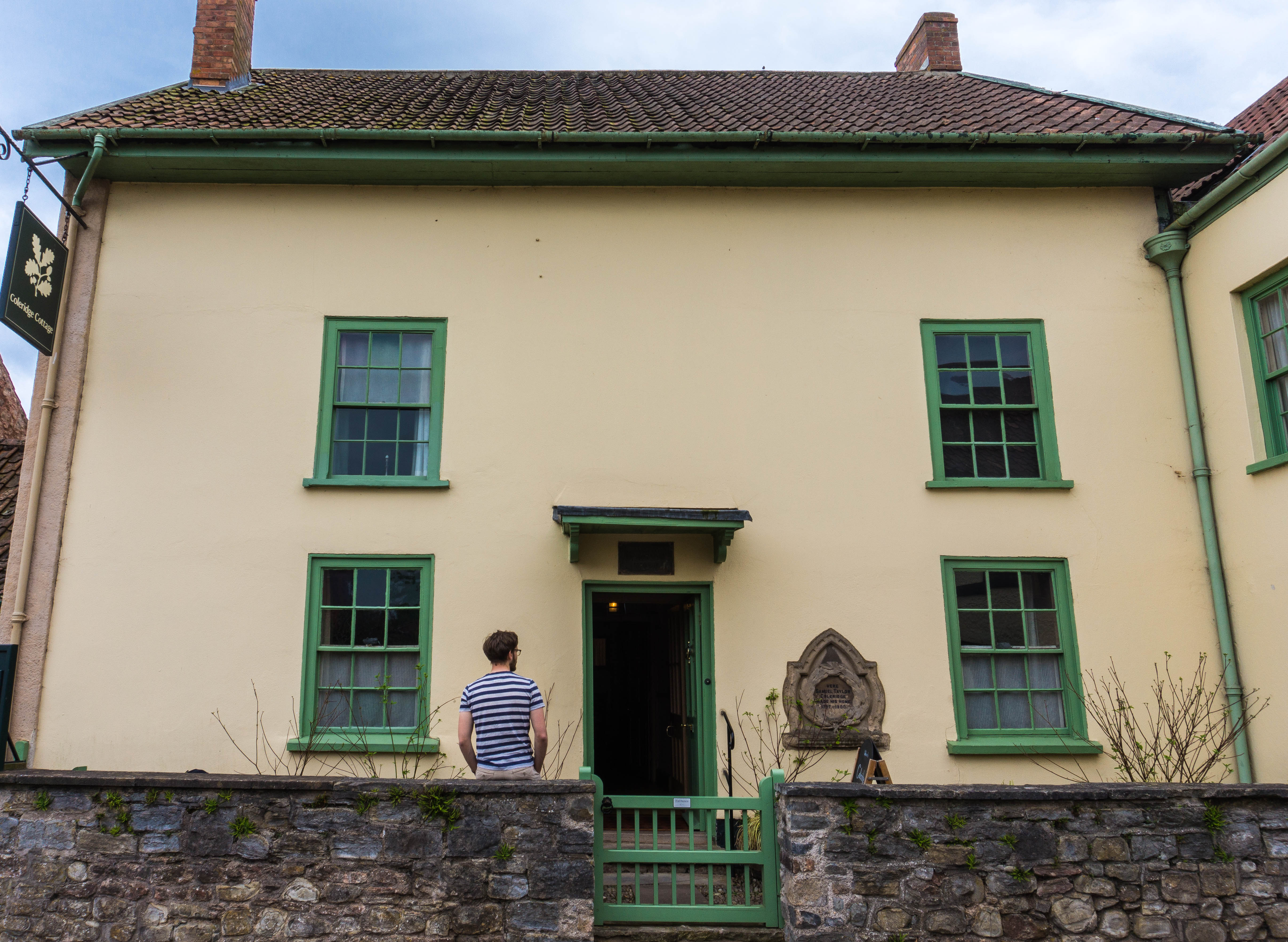
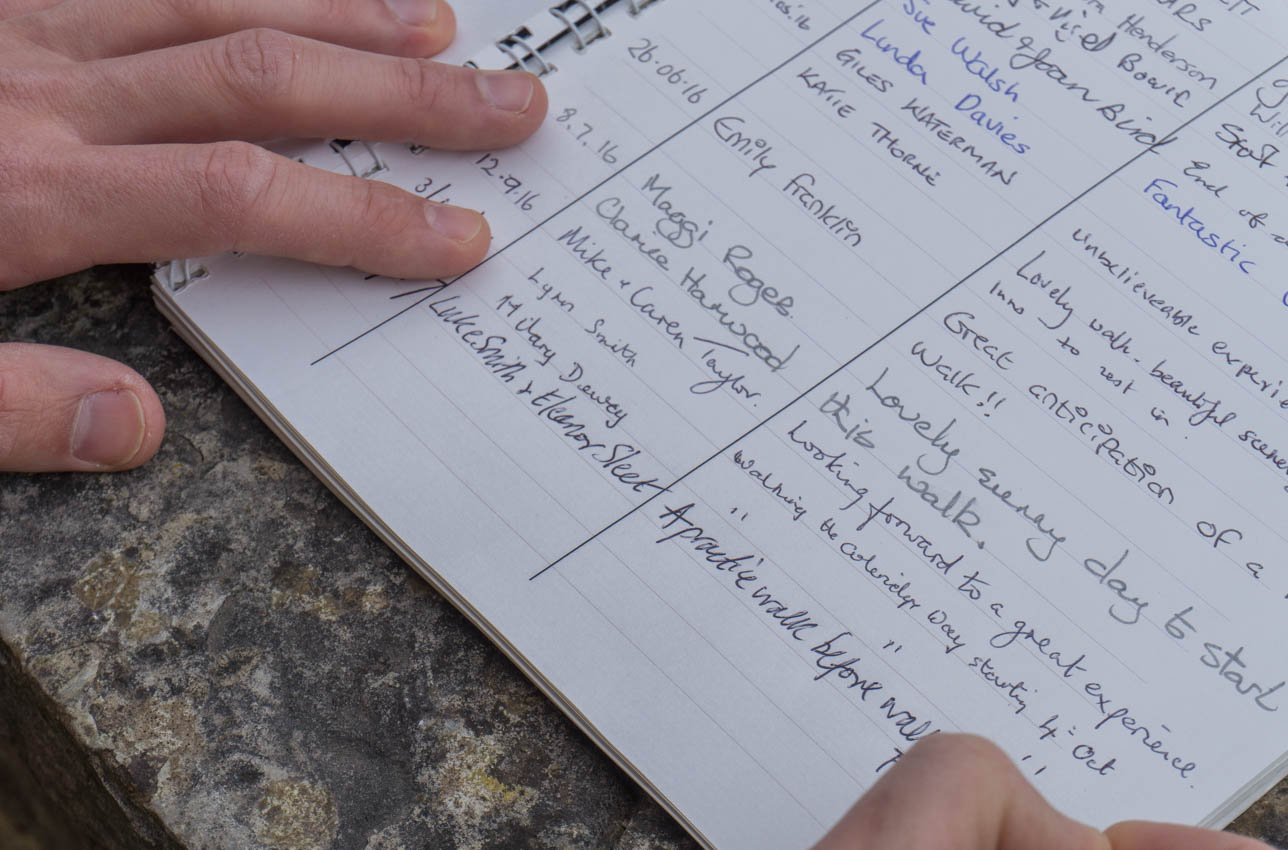
We signed our names in the ‘way book’ and with no fanfare at all set off down the road at the embarrassingly late time of 3.45pm. We were camping on the trip, and Day 1’s plan was to walk the first ten miles.
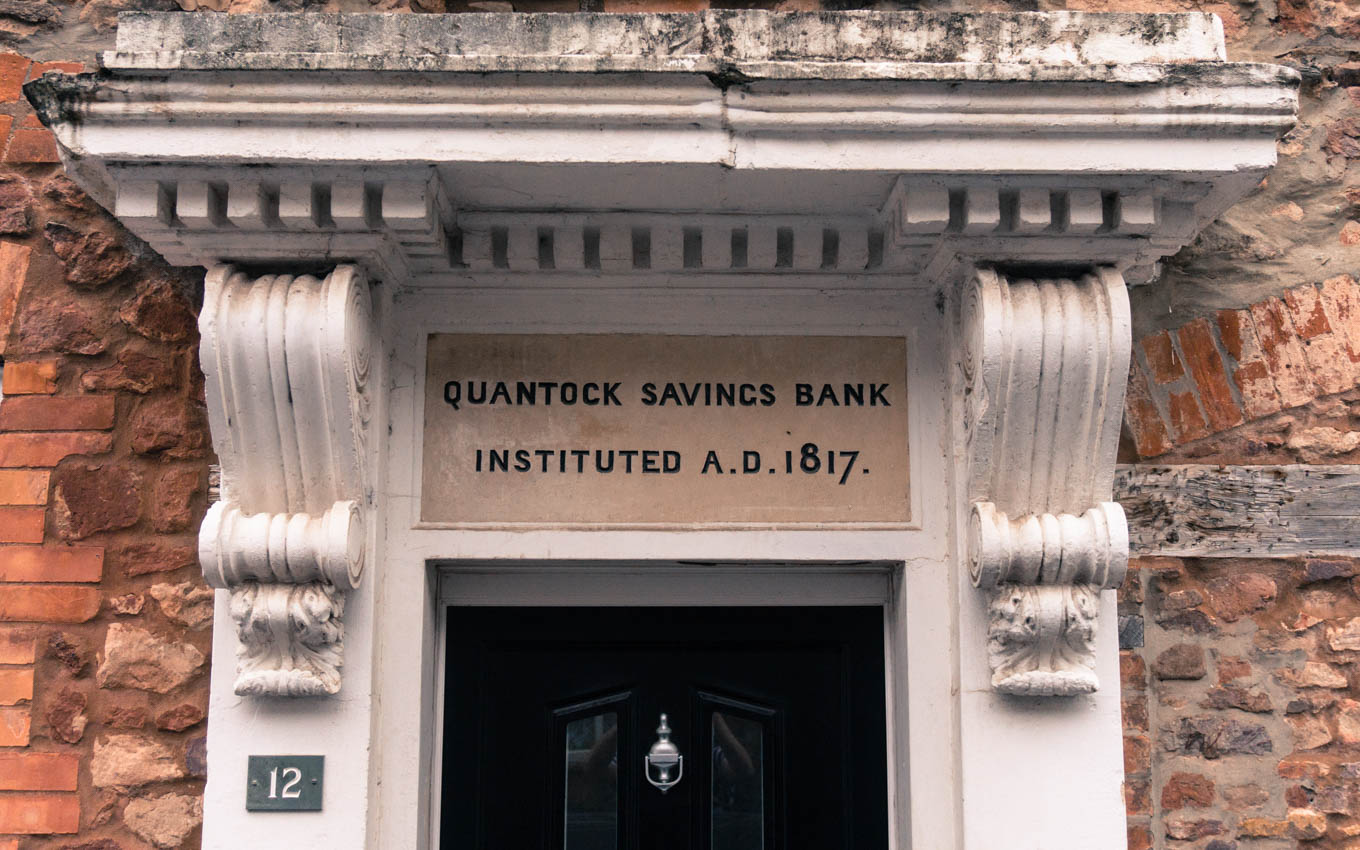
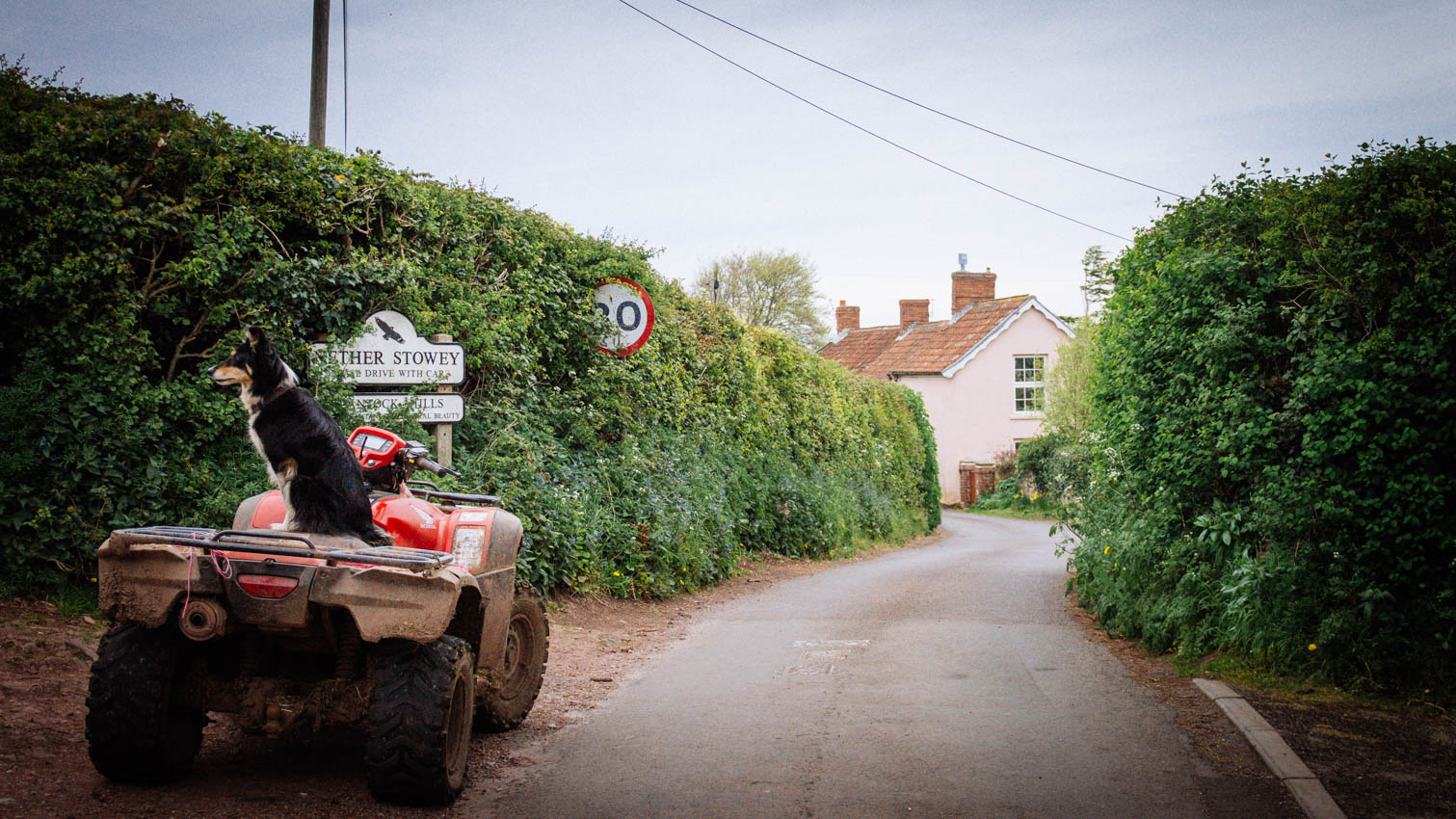
The Coleridge Way leads straight out beyond the village boundaries, fingerposted by the carved symbol of a quill. And we were soon rollercoasting over the Quantock Hills, a little lumpy range of moorland and gorse. Now Luke grew up here, so he is less obsessed with the Quantock place names, but they are quite something. As well as Nether Stowey, there’s Over Stowey (of course!), Cushuish, Stogumber, Bishpool, Dead Woman’s Ditch… The names trip casually off the tongue of everyone around here, everyday. But really they are little relics from a lost and faraway time.
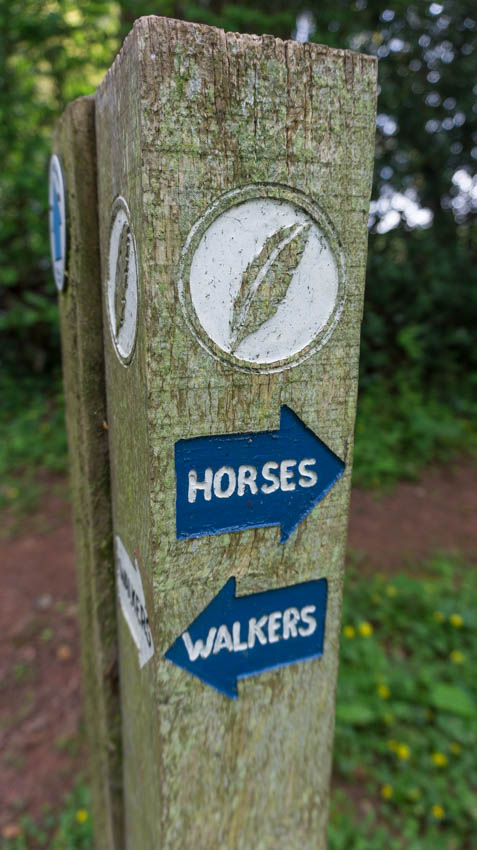
The Quantocks were cool and cloudy and hushed. This was, at least, Coleridge country: we walked up along Pardlestone Lane, an old haunt of the Wordsworths (William Wordsworth being Coleridge’s close friend and fellow Romantic poet). Every now and then, herds of red deer crashed around ahead of us, panicked by our sudden appearance. Hundreds of them roam the countryside here, hidden most of the time. It’s only in the quietest, farther corners that they roam.
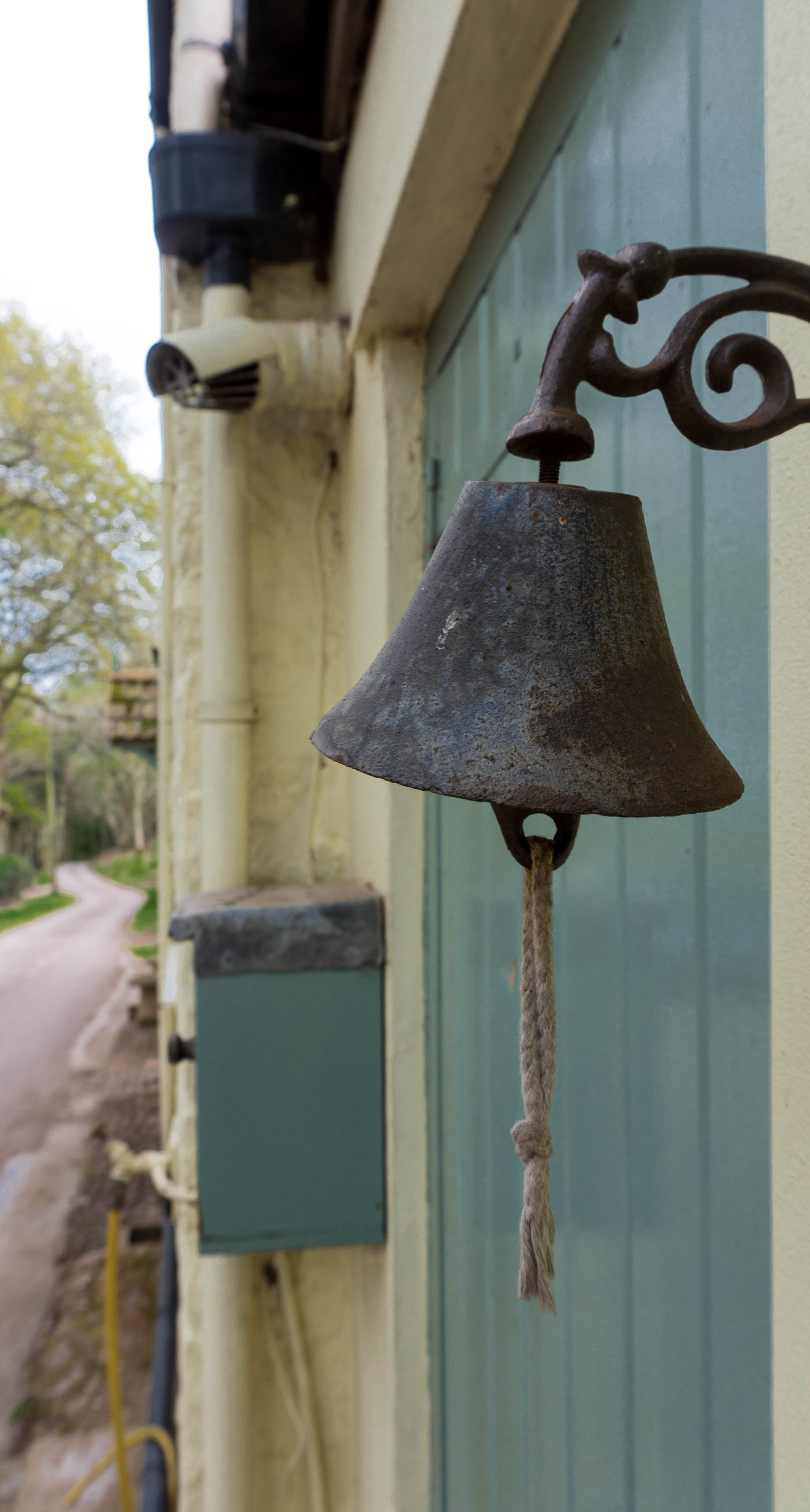
We wound through the deep combes of Somerset, along bubbling streams, thatched cottages, and ancient winding lanes. We were walking through the gloom of early evening when we (finally) made it to camp for the night. The village of Bicknoller was a pretty stop, crammed along the base of its own looming hill.
‘Ten miles?’ You’re thinking, ‘3.45 in the afternoon? Do these people know what they’re doing?’ The answer might be no, because we had set ourselves a nice round eighteen miles for the following day. It dawned bright and for us, groggily.
But continuing on the Coleridge Way we discover this part of the world’s wonderful to explore, full of odds and ends of tradition, funny old English ways, and quirky inhabitants:
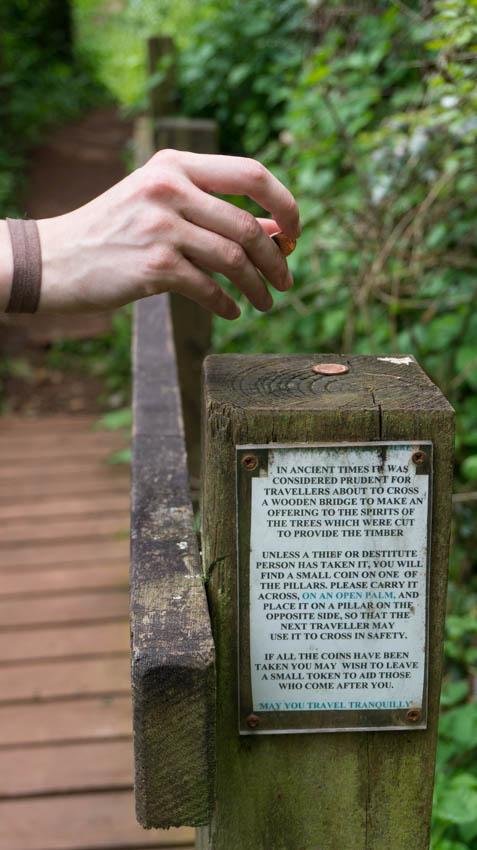
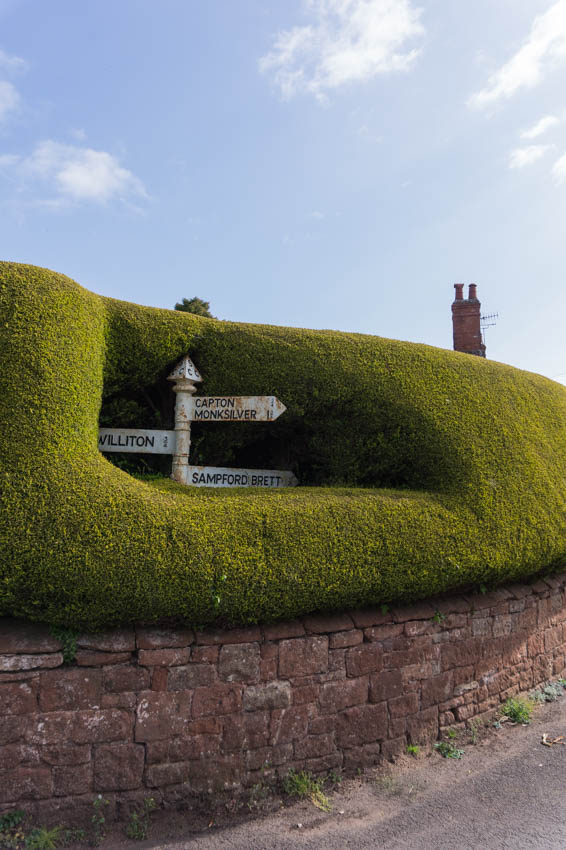
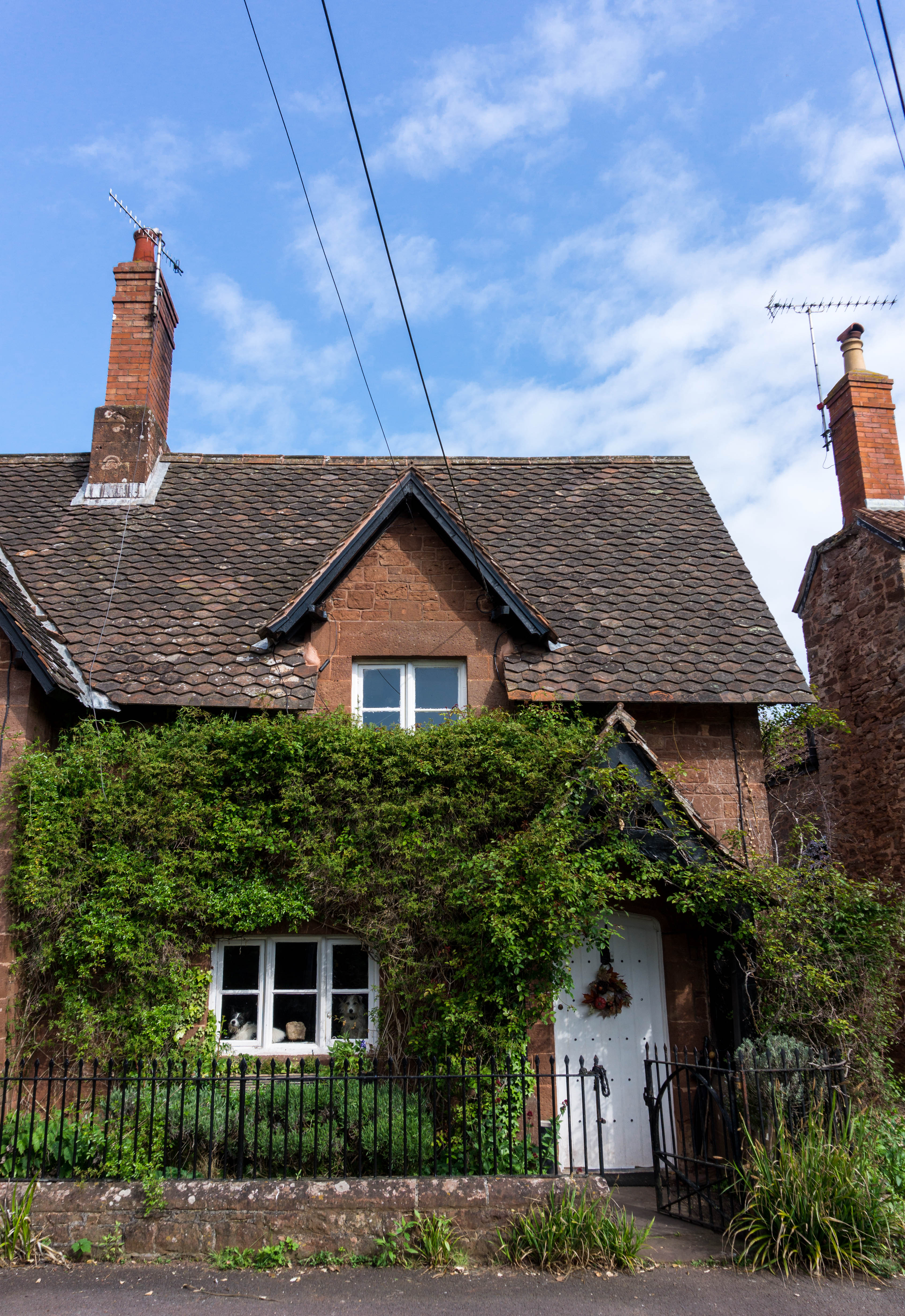

Let’s be honest: eighteen miles was too many miles. Somewhere up a hill, my right knee started its own painful throb. And Luke found he was carrying about a car boot load of too much stuff in his rucksack. (IS instant coffee necessary?) Oh, and we made a silly decision to walk down a big hard road for a few miles, lost and hot.
But -thank God- when we arrived into a little place all squidged in by big, hopeless moorland, their one and only pub was open. With coffee! And wifi! And CHAIRS. Ah, the Royal Oak Inn at Luxborough, beautiful too with beams and white washed walls. We crawled in and collapsed in a wind-burnt heap. And, I kid you not, my legs stayed frozen mid-stride under the table for a disturbing twenty minutes.
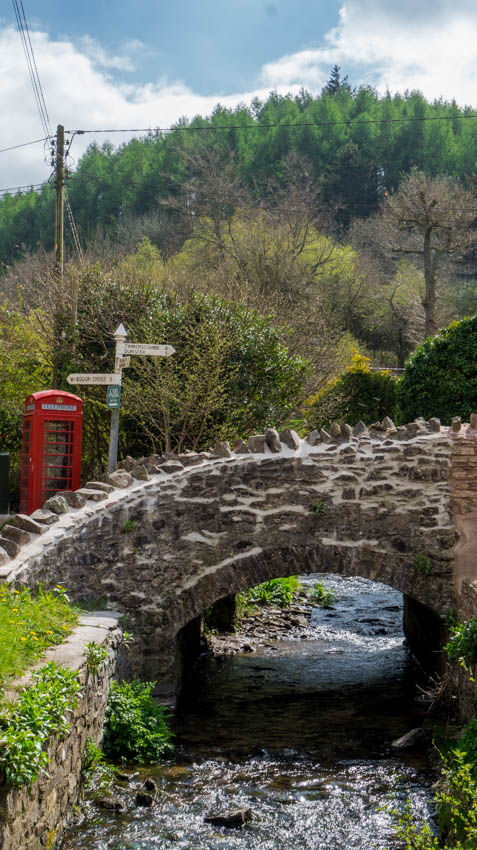
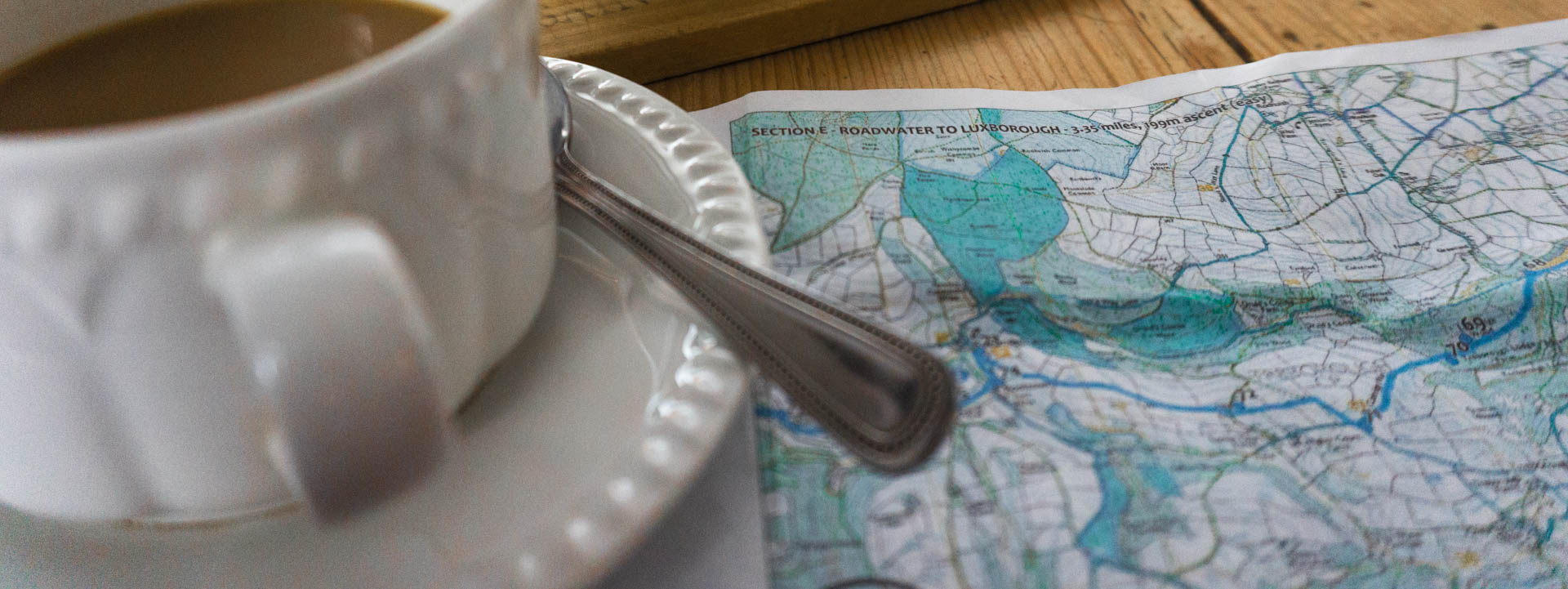
But whatever was in that coffee worked: we practically shot over the moors to our stopping place for the day, Wheddon Cross. Pretty much the crossroads of its name, it’s here we had to go off route, catching the local bus to the nearest campsite.
Weirdly though, a huge man with a broad Glaswegian accent rocked up in a minivan instead.
We asked him uncertainly for ‘Badgers Holt’, the name Luke could remember for the place we were heading. ‘Where’s he takin yew now?’ he shouted at me, grinning, as we boarded – obviously the middle of nowhere. We screamed around the moors in that van for half an hour before getting off in a tiny place, Bridgetown. We were deep within a shady moorland valley, cut through by the River Exe.
My eyes had gone pink at this stage from tiredness, and we staggered around putting up a tent and having showers in the gathering cold. Upon friendly advice too, we tottered up the road to the pub for food and for happy, dreamless sleep.
And somewhere along the hills and tracks and stiles, you realise you got yourself somewhere entirely under your own steam. And you saw everything – felt everything- along the way too.
Does this walk tempt you, or another like it?
And wait! There will be more fun on the Coleridge Way: Part Two here…

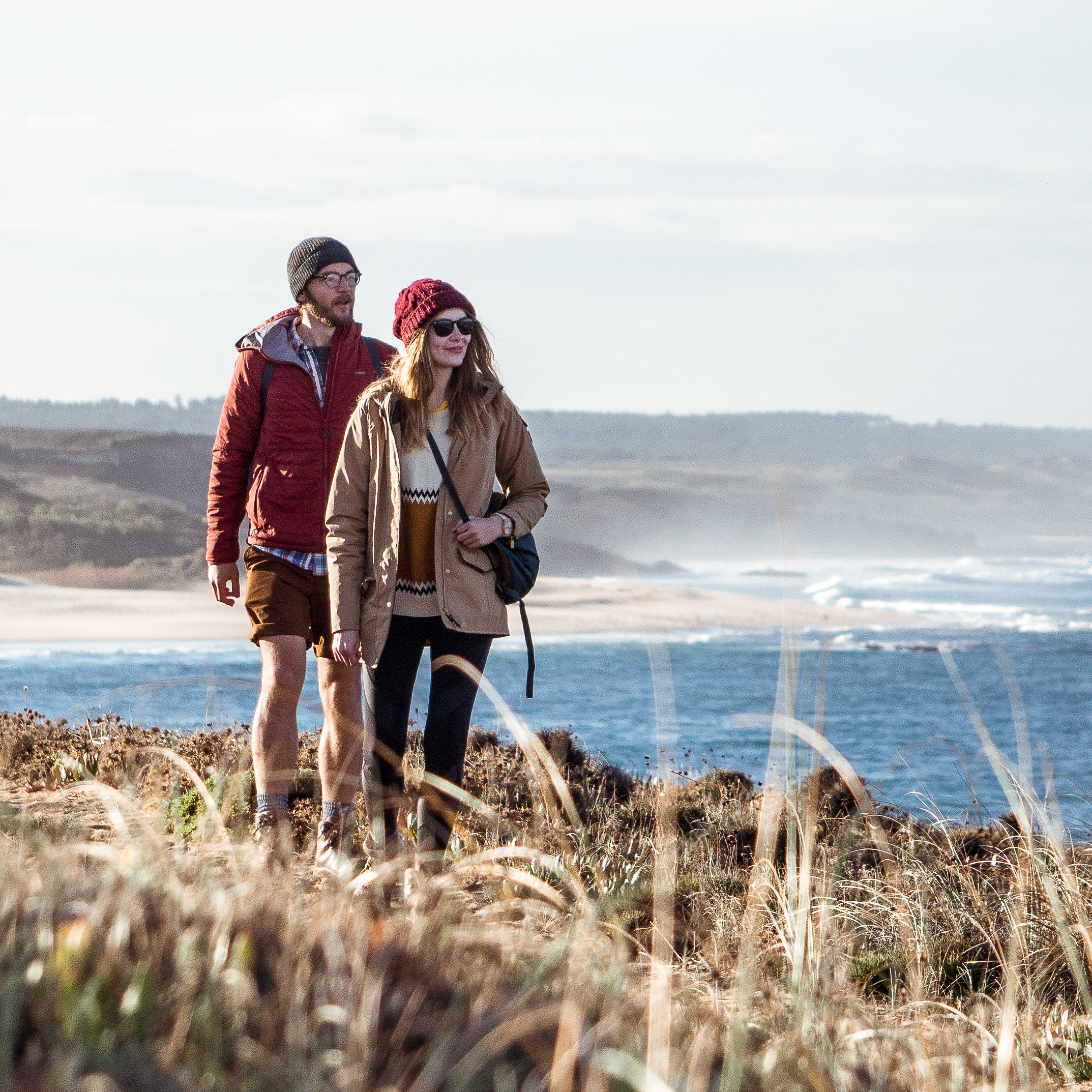
Hi Nell and Luke,
Thank you, I’m so inspired by your website. I’ve been dreaming of doing the Via Francigena since I heard about it a few years ago. We are traveling from Australia so want to spend about 6 months in Europe walking and you have provided lots of inspiration. I have a question about the Coleridge Way. Is it accessible by public transport? Also can you recommend any walks in the Yorkshire moors? We plan to do some walking in Spring the UK before starting the big one.
Thanks,
Cathleen
Hi Cathleen, thank you for your message.
You can get a bus to the start in Nether Stowey and a bus from the end in Lynmouth. The Coast-to-Coast goes across the Yorkshire Moors and the Cleveland Way is a stunning short trail. There’s also the England Coast Path which borders the moors.
Fantastic news that you are going to be doing the VF
Happy planning,
Luke & Nell
Hi, I’m thinking about planning this trail in prep for some big adventures next year! Where did you camp along the way?
In my Uncle’s garden for the first night (don’t think that’s an option for you..!) 🙂 We then walked up to Wheddon Cross and diverted down to Exe Valley Caravan Park in Bridgetown (near to a nice little pub!). Then for the third night stayed at the Porlock Caravan Park. Good stops. We hot footed it home when we reached Lynmouth. It’s a lovely walk, enjoy!